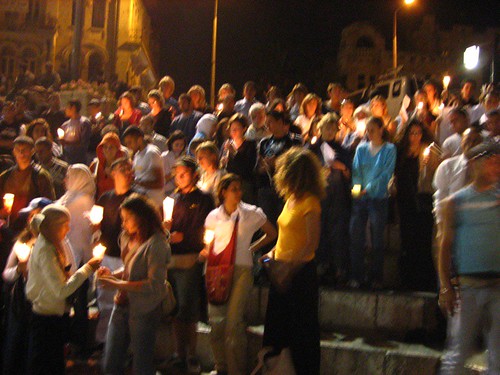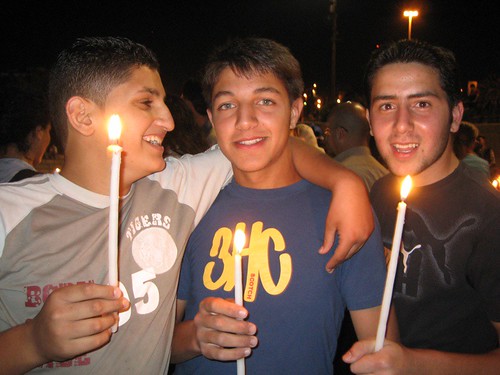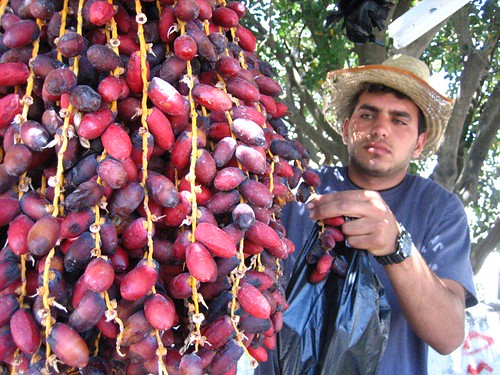The kids at the hospital’s kidney dialysis unit are terrific. Three times a week they ride the bus to the hospital to spend four hours of the afternoon hooked up to I.V.s and dialysis machines as their blood gets cleaned in an energy-sapping process. I had helped to arrange an art project with the kids—the higher-ups in Geneva want children’s drawings for Christmas cards. The theme was supposed to be Hope and Healing for the Future, but if you give a girl a box of colored pencils you’ll likely end up with pictures of flowers and ice cream, and not a dove of peace flying over a healed Jerusalem, which I think is more of what Geneva had in mind. Someone also broke out the gold glitter puffy paint at some point (it was used quite liberally), and one of the nurses wrote the kids’ ages at random spots in the middle of their drawings, so basically none of these will win the Christmas card competition. But we had fun anyways.
On arriving at the dialysis room, I was introduced to Alla, who I was told is a real ladies’ man. He’s somewhere in his mid-teens and was flipping through a British woman’s beauty magazine called SHE, looking for inspiration about futures of hope and healing. Basically, this involved giggling at all the underwear ads and then slamming shut the magazine in mock embarrassment before continuing to shuffle through the pages. The other kids got down to work, getting help on the outlines from the nurses who they know well after years of coming to the hospital for dialysis. Bashra drew herself in a fancy dress. Hassan drew a bridge over a creek and a little house with a garden. Huda drew a rose with a butterfly hovering nearby. Hiba, the artist of the group, drew an elaborate ice-cream sundae with cherries and a flower border around the paper. And Alla, having found his muse somewhere in the pages of SHE, drew a bra and underwear. The kids, who line the perimeter of the room in their puffy recliner chairs, their blood coursing through rubber tubing, cracked up when Alla proudly showed off his lingerie drawing. The nurses laughed and scolded him, very used to his antics, which normally set the room into fits of laughter. And Alla, always the charmer, turned to me with his hand on his chest and said solemnly “I’m sorry. I’m so sorry,” then crumpled up his drawing to prove his remorse for so uncouth an art project.
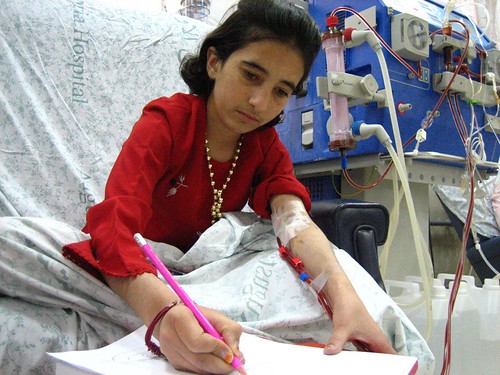
The talk and laughter between the kids dies down an hour or two into the dialysis session as they tire from the cleansing process. The recliners are here so they can sleep comfortably through the last half of the session before the tubes and needles are removed from their arms and they board the bus to go home.
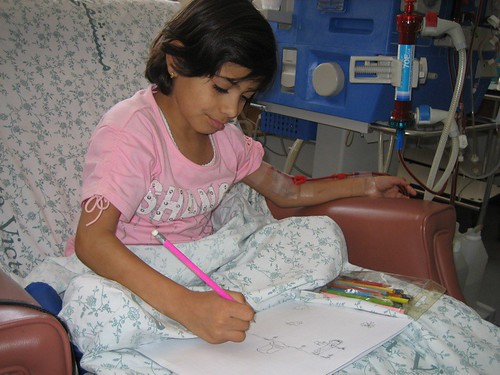
A few years ago they would have ridden to the hospital with their parents, but since the construction of the Separation Wall and the increased number of checkpoints, the hospital has had to get creative to make sure patients can reach the medical services they need. Most of the kids come to the hospital without family because their parents or siblings can’t get travel permits. And even though they’re children and they would die without these bi- or tri-weekly treatments (our hospital is the only one offering pediatric dialysis to West Bankers), there is still the constant process of applying and reapplying for permits to make sure they can cross the checkpoints on the hospital bus and make it to the kidney dialysis center.
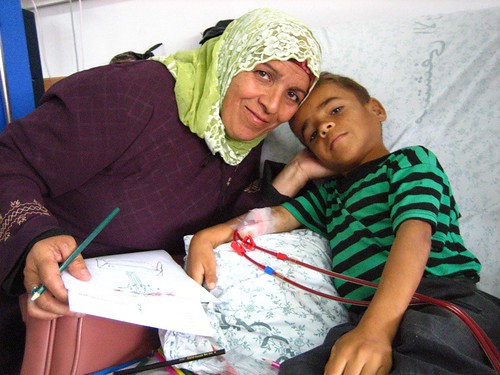
Drawing with mom.
Here are two photos from an anti-war vigil I went to outside of Damascus Gate last week:
